Like all artists I know, I originally and continue to be inspired by the work of other artists that I admire.
The first of these that I can recall was sometime around 1967 when I was absolutely enthralled by the 3-book instruction series on pencil drawing by Ernest W. Watson (1884-1969). I was fascinated by the incredible realistic renderings of buildings and landscapes that he produced with just a common pencil. By the way, thinking back while writing this, I realize that I have to “blame” the Dartmouth Bookstore for sparking my art career, I am pretty sure, with the purchase of this first instruction book set.
Very soon after discovering Watson, probably on a nearby slot on the bookstore’s shelves, I found a similar pencil instruction book by another artist, Ted Kautzky, called Pencil Broadsides (which refers to his use of wide carpenter pencils). Also nearby were Kautzky’s watercolor instruction books. I took one look at his Ways With Watercolor and was hooked. This was the start of spending practically all the little money I was making playing banjo with the Dartmouth Five to add to my collection of watercolor books. I pored over watercolor technique and the examples in Kautsky’s books and absorbed all I could.
I recently found what I think was my first fairly decent but primitive watercolor, dated 1968. It definitely has a “Kautzky-esque” feel to it.
The visits to the bookstore kept revealing more fabulous watercolorists. They began to add more of the art, especially landscape, instruction books published by Watson-Guptill (the same Watson as above) by Philip Jamison, Richard Schmid and many others. Besides these books, I started a subscription to the no longer available American Artist magazine whose issues introduced me to a whole new world of inspiration, especially since the magazine seemed to somewhat favor realism, an art form definitely not in “favor” at the time.
Then 1968 introduced me (and lots of other people) to the artist and the book Andrew Wyeth. The book with its large, “coffee-table” format allowed for the reproduction of over 100 of his paintings, especially the brilliant watercolors, in wonderful detail. I was amazed at how, out of a seeming mess of wet watercolor paint, he could make realistic images emerge. My original copy is pretty ragged right now after enduring thousands of thumb-throughs, multiple moves, young children leafing through it and loss of its dustcover. At least it did not suffer the fate of what I heard was that of literally most copies of the first printing — pages were cut out and the images framed, obviously destroying the books in the process! Ah, the power of greed.
Wyeth certainly inspired me, but mostly to loosen up a bit, paint “wet” with lots of paint and, unlike many watercolorists, to not be afraid of strong contrasts and dark values. While I don’t think that my work then or now really emulates Andrew Wyeth, if someone ever tells me they think my paintings look like his, I am certainly not offended (as opposed to being compared to another realistic painter I will not name). But I think the main influence was Wyeth’s work allowed realism to become once again accepted as a valid art form and that when I started painting I was bucking up against the prevailing non-realist trends.
Around this same time another influence was Eric Sloane. Sloane originally published, among other titles, a number of books of sketches, diagrams and drawings of Early Americana, items like utensils, hardware, tools, even the weather (not exactly “Early American”), followed by a book of brilliant oil paintings of American barns. In this book I was particularly impressed by his dramatic lighting and composition. A lot of what I was painting during those last two years of college in New Hampshire were landscapes featuring barns or other old buildings, so An Age of Barns was certainly an influence on how I was seeing and painting these old structures. I am glad I concentrated on them at that time because they were beginning to disappear, many torn down to salvage old barn-wood, and replaced by mostly new metal structures with much less visual appeal.
Following a lifelong interest and expertise in meteorology and observation of weather, one of Eric Sloane’s final works before his death was the sky-scape mural, Earth Flight Environment in the Smithsonian Air and Space Museum.
Enough for now. Next time I hope to highlight some of the painters I now find inspiring (or whom I may have forgotten here) have influenced my art journey for the last 50 years and continue to do so to this day.
If you are seeing this post on Facebook or other social media and would like to receive my newsletter by email, please go to https://santhony.com and sign up. You can also post comments there on every post or page.
Thanks for reading!
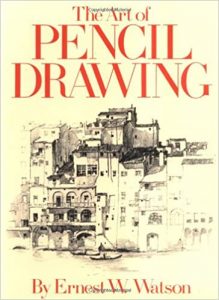
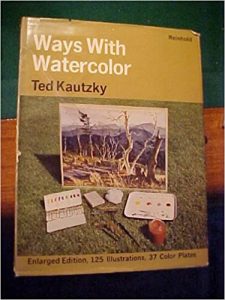
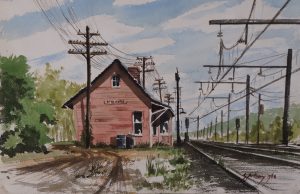
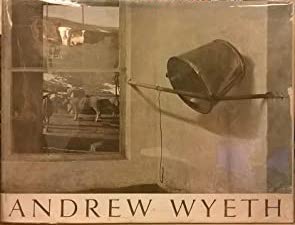
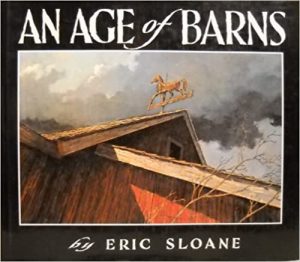
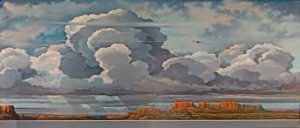
I have come across one of your watercolors dated 1970. I was wondering if you could tell me what it is worth
Hello Liz, Thanks for asking. Unfortunately, I would really have no idea what one of my very early painting is worth, especially not knowing what it is. Sorry!